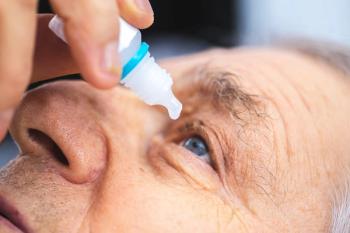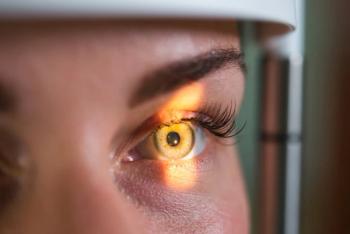
Ophthalmology doctors and the care of cancer patients
Because radiation therapy carries a risk for a variety of acute and late ocular complications, optometrists can have an important long-term role in the care of cancer patients.
Birmingham, AL-Because radiation therapy carries a risk for a variety of acute and late ocular complications, optometrists can have an important long-term role in the care of cancer patients, said Tammy Than, MS, OD.
Radiation-induced ocular complications are a result of direct damage, so their occurrence requires that the eye is within the irradiation field. The risk depends on the number of fractions administered, fraction size, and cumulative dose.
Radiation-associated dry eye
Dry eye is also very common since the superficially located structures that produce tear film components are highly susceptible to radiation-induced damage. Practitioners need to realize that radiation-associated dry eye is a very severe disorder mandating aggressive intervention.
"In one study of patients receiving radiation therapy, almost two-thirds had visual acuity of 20/200 or worse because of their dry eye disease," noted Dr. Than. "In another study, 12 of 30 patients receiving a radiation dose of at least 5,000 cGy required enucleation because of dry eye."
Systemic therapy with cholinergic agonists that stimulate secretion by the lacrimal gland also should be considered. Two agents are currently available, pilocarpine (Salagen) and cevimeline (Evoxac), although neither is approved for dry eye.
"Optometrists who are not comfortable prescribing these medications for off-label treatment should at least consult with the patient's primary care provider about their possible use," said Dr. Than.
Eyelids and lashes
As the thinnest skin in the body, the eyelids and adnexal structures are particularly susceptible to radiation-induced complications. These include permanent telangiectasia, madarosis, scarring leading to entropion or ectropion, and trichiasis. Topical bimatoprost ophthalmic solution 0.03% (Latisse, Allergan) may be useful for patients with loss of lashes.
"Lash loss is likely to be permanent if the radiation dose was > 5,000 cGy, so bimatoprost treatment should be started only if there is evidence of natural regrowth," she said.
The etiology of trichiasis may involve entropion, remodeling of lid tissue, or direct follicular damage, and its management may require strategies more aggressive than epilation.
Radiation can also cause nasolacrimal duct obstruction leading to epiphora. Intubation with silicone tubes that are placed prior to the radiation therapy and removed several months after it is completed is recommended to prevent this complication, although patients will need to be referred for this procedure that requires suture anchoring.
"This prophylactic strategy offers a great service because patients who develop epiphora may need to undergo dacryocystorhinostomy," noted Dr. Than.
Epiphora also can occur if the nasolacrimal duct is open but peristalsis has been affected by muscle damage. Placement of polyvinylpyrrolidone perforated plugs (FCI Ophthalmics) to facilitate tear outflow can be helpful in this situation, although the device insertion can be somewhat challenging.
Newsletter
Want more insights like this? Subscribe to Optometry Times and get clinical pearls and practice tips delivered straight to your inbox.









































